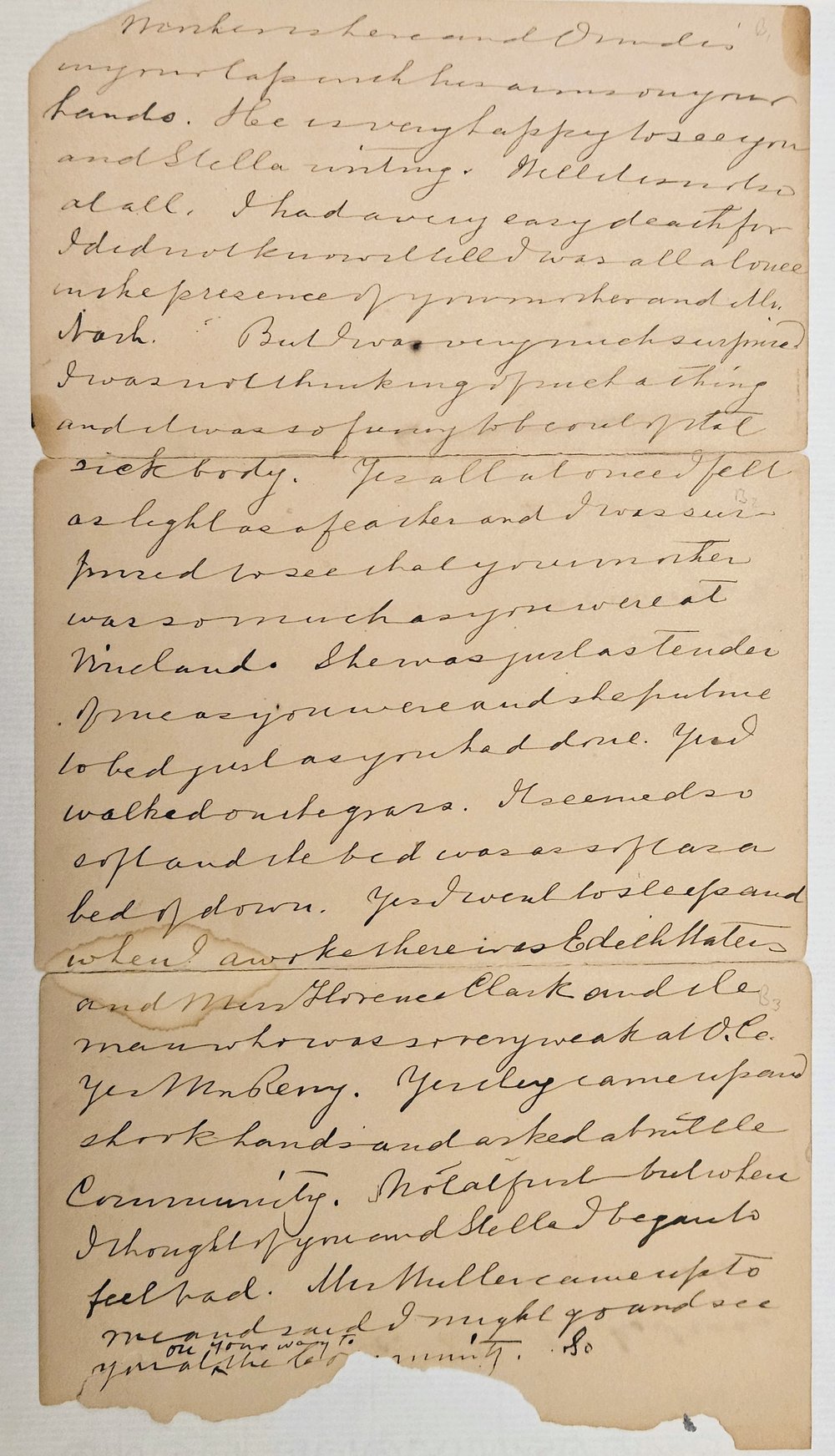The Oneida Community Communicate with the Dead

by Irina Savinetskaya, Early to Pre-20th Century Curator
Situated in Oneida, New York, the Oneida Community was a utopian commune active from 1848 to about 1916. The Community spearheaded one of the most radical efforts to improve women’s rights in 19th-century America and was famous for practicing free love. Lesser-known facts about the Community are that it conducted the first eugenics experiments in the U.S. and patented a number of successful inventions, including world-famous innovative mouse traps.
Within the Special Collections Research Center (SCRC), there are approximately 100 boxes containing materials related to the history of the Oneida Community. Among them are several examples of automatic writing, produced during spiritualist séances. Spiritualism was a widespread social religious movement, the members of which believed that humans were able to communicate with spirits. Although John Humphrey Noyes, the founder of the Oneida Community, initially rejected Spiritualism, he eventually came to embrace the movement, and spiritualist séances became part of the Community’s life. During these sessions, Community members attempted to get in touch with the dead, while a designated writer or medium moved the pencil without being conscious of what they were writing.
An excerpt from our collection includes one such encounter with a deceased member of the Community, who gives an account of their death: “I had very easy death … all at once I felt as light as a feather and I was surprised to see that your mother was so much as you were … She was just as tender to me as you were and she put me to bed just as you had done. Yes I walked on the grass. It seemed so soft and the bed was as soft as a bed of down.” Other examples also include questions that the Community posed to the dead, such as: “Do you think Mrs. Miller thinks that Mrs. Skinner is too devoted to Mr. Anges?” and “Do you and Mrs. M think [that] H. H. S. will change homes this winter?”
[Photo above of automatic writing produced during a séance. Oneida Community Collection, Special Collections Research Center, Syracuse University Libraries]
